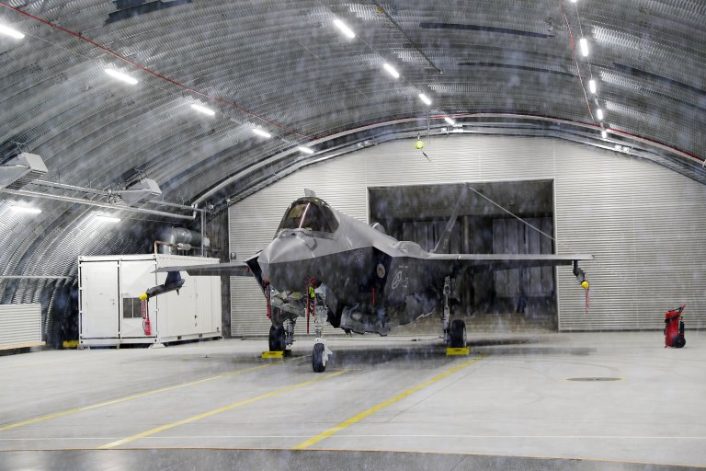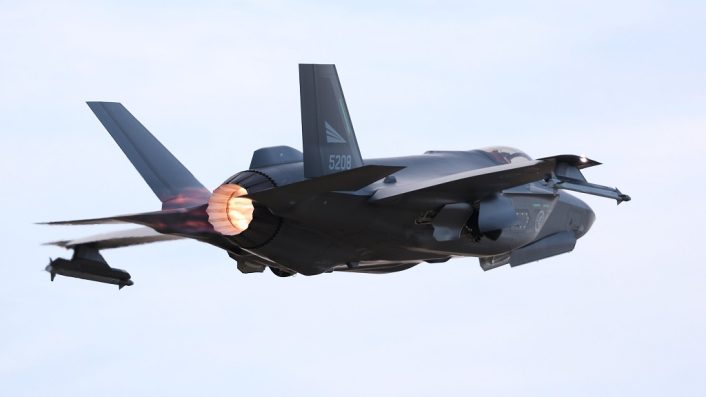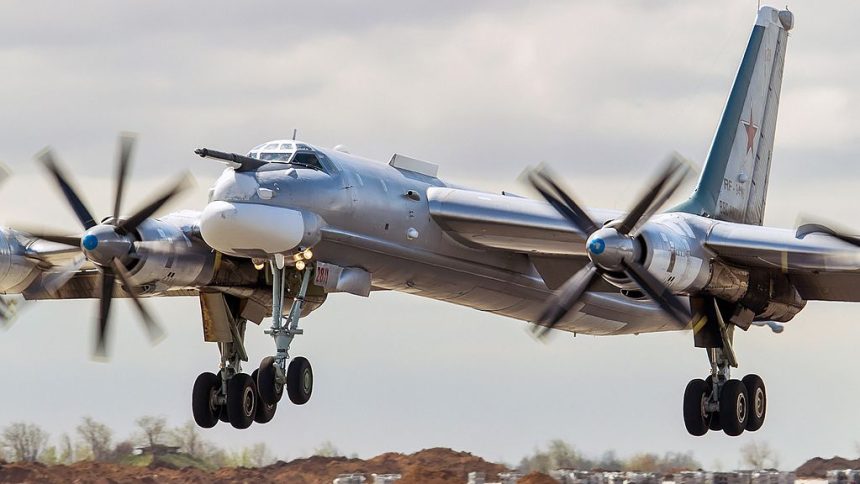The Barents Sea and the Arctic region are becoming the theatre of many close encounters between NATO and Russian aircraft these days.
On Apr. 3, 2024, two Russian Tupolev Tu-95MS strategic missile-carrying bombers, carried out a scheduled flight over the neutral waters of the Barents and Norwegian Seas.
“Two Tu-95MS strategic missile-carrying bombers of Russia’s long-range aviation have performed a scheduled flight in the airspace over the neutral waters of the Barents Sea and the Norwegian Sea. The flight lasted over five hours. Sukhoi Su-35S aircraft of the Aerospace Forces provided fighter support for the flight,” a statement of the Russian MOD said.
The official release does not mention any other supporting assets, but it seems reasonable to believe that the “package” was also supported by Il-78 “Midas” tankers at certain stages of their trip.
Long range deterrence missions
Generally speaking, as we have reported multiple times in the past, Russian Aerospace Forces Tu-95MS “Bear H” and Tu-160 “Blackjack” bombers regularly fly near NATO airspace along with Su-35s also to probe the Alliance’s air defense network and readiness.
Sometimes, they are accompanied by A-50s whose role is probably more to collect mapping and signals intelligence, and build a communications and early warning “Order of Battle” with radio and radar frequencies that can be cataloged for future use, than provide AEW&C (Airborne Early Warning and Command). The United States and NATO also conduct similar missions close to Russian airspace (and other areas of interest) for the same reasons.
Long-Range Aviation Commander Lieutenant General Sergey Kobylash pointed out that “the flight was conducted in strict compliance with international rules on the use of airspace.” “Long-range aircraft crews perform flights over the neutral waters in the Arctic, the North Atlantic, the Black Sea, the Baltic Sea and the Pacific Ocean on a regular basis,” he stressed according to the State-run TASS news agency.
Intercepted by Royal Norwegian Air Force F-35s
Interestingly, in its public release, the Russian Defense Ministry also added that “foreign fighter jets followed the strategic bombers at certain stages of the route.”
We reached out to NATO and an official told us:
The Tu-95 were indeed intercepted and visually identified by NATO jets from Norway.
The Russian planes were part of a larger formation of Long Range Aviation assets which operated north of the North Cape and headed back eastbound. Nothing out of the ordinary was reported from the interactions which were conducted professionally.
We got also confirmation from NATO and the Royal Norwegian Air Force that the aircraft scrambled to intercept the Bears were the F-35As.
QRA at Evenes
The F-35A have taken over the QRA (Quick Reaction Alert) duty from the F-16 fleet from Jan. 6, 2022, ending the Fighting Falcon’s 42-year continuous service for NATO and Norway. With the new aircraft, the QRA mission moved from Bodø to Evenes (located further north than the previous airbase), where the RoNAF has two F-35A in alert duty 24/7.

As per standard peacetime readiness, if an unknown aircraft approaches Norwegian and NATO airspace, the F-35As are scrambled from Evenes and are airborne within 15 minutes. The Norwegian Air Force’s control and warning center then directs the combat aircraft to identify and escort the unknown aircraft.

Norwegian F-35As achieved the IOC (Initial Operational Capability) on Nov. 6, 2019, becoming the third European country to reach IOC with the F-35, after Italy and the UK.
The RoNAF F-35 also deployed to Rygge air station in 2019, and been deployed twice under NATO command to Iceland for the Icelandic Air policing, in 2020 and 2021.









